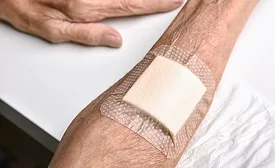Columns
Strategic Solutions
Though bioinspired approaches to adhesive R&D often lead to great improvements in the lab, translating these sophisticated chemistries to commercial scale is a considerable challenge.
Read More
Specialty Chemicals Insights
Focusing on Workforce Development in the Adhesives and Sealants Industry
Employee training is vital to improve core competencies and increase productivity and capabilities across all sectors.
May 18, 2022
Tape Talk
Welcome to Tape Week 2022
At Tape Week 2022, exhibitors, sponsors, and attendees are invited to advance their missions and demonstrate their commitment to our industry.
April 12, 2022
Supply Chain Strategies
Do You Have Suppliers or Partners?
Partners are always prioritized over transactional suppliers during times of allocation and disruption.
March 11, 2022
European Perspectives
Defining a System for the Notification of Polymers
A system for the notification of polymers should be defined in the event of a change in their treatment under REACH.
March 3, 2022
Ask Dr. Dave
Ask Dr. Dave’s Greatest Hits
Dave Dunn has retired as a columnist following 20 years of monthly contributions.
February 21, 2022
Specialty Chemicals Insights
Connections, Solutions Take Center Stage at Specialty & Custom Chemicals Show
The Specialty & Custom Chemicals Show will feature more than 165 exhibitors, 39 Exhibitor Showcases, and a series of educational sessions focusing on pressing issues that manufacturers are facing both inside and outside their fence lines.
February 15, 2022
Common Bond
Bringing the Adhesive and Sealant Industry Back Together in 2022
The Adhesive and Sealant Council is bringing the industry together in Chicago for a grand event—the 2022 World Adhesive and Sealant Conference.
February 2, 2022
Ask Dr. Dave
Alternative Cure Systems for RTV Silicone Sealants
We use RTV silicones in our assembly operations, and our workers keep complaining about the strong vinegar smell. Somebody told me that we might be able to get low-odor, low-volatile silicones. What issues should we be aware of?
January 25, 2022
Strategic Solutions
PSA Wound Dressing Adhesion and Skin Type: A Delicate Balance
Consideration must be given to various skin types to ensure dressings can be securely attached and easily removed without skin damage.
December 15, 2021
Keep the info flowing with our newsletters!
Get the latest industry updates tailored your way.
JOIN TODAY!Copyright ©2025. All Rights Reserved BNP Media.
Design, CMS, Hosting & Web Development :: ePublishing







.webp?height=168&t=1646310161&width=275)






